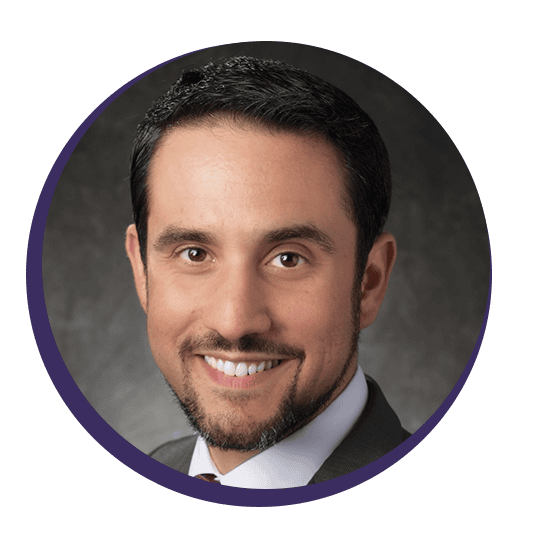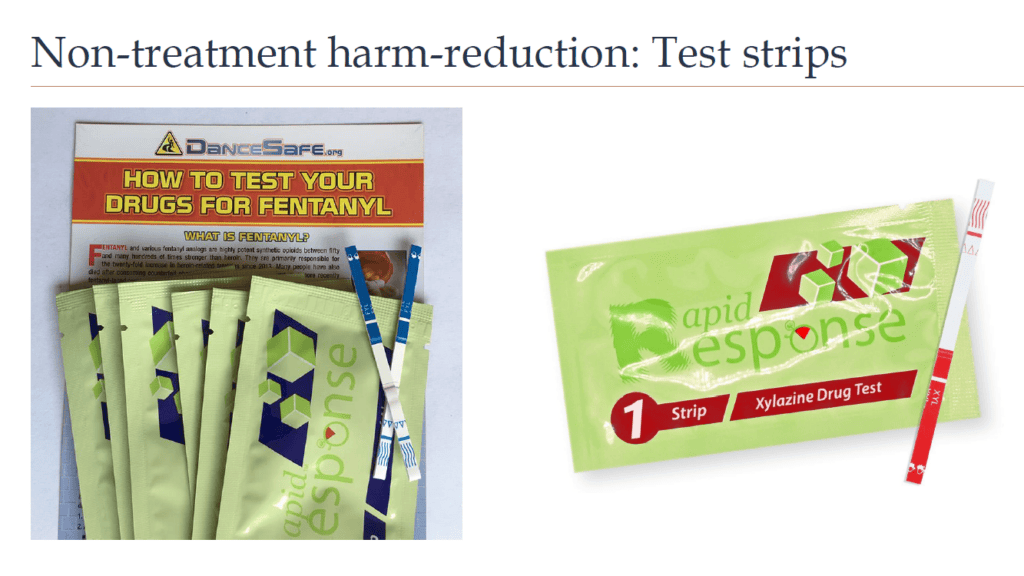An excerpt from the 2024 Family Medicine Update Oct. 23 – 25.

Harm Reduction
The opioid crisis has taken nearly 80,000 lives in the United States this past year. In his talk at the virtual Family Medicine Update, Aaron Weiner, PhD, broke down ways healthcare providers can use harm reduction—helping people stay safe and healthy, even if they’re not ready or able to quit using drugs.
Harm reduction is about stopping the worst possible outcomes—irreversible harms—while someone is still actively using. Instead of pushing people to quit outright, this approach is about preventing fatalities, infections and other major setbacks. In other words, harm reduction meets people where they are.
The Changing Landscape of the Opioid Epidemic
The opioid crisis started with prescription painkillers, but the situation has shifted. As tighter regulations curbed prescription access, more people turned to heroin and, more recently, to fentanyl. Fentanyl is cheap, potent, and unfortunately, it’s everywhere.
“We’re seeing the most dramatic overdose increases we’ve ever seen,” Dr. Weiner said. “Fentanyl is extremely cheap and easy to produce… it’s so potent that even a tiny dose can be fatal, and many users don’t even know it’s in their drugs.”
This means people are often unknowingly taking fentanyl, leading to fatal overdoses.
Basic Kinds of Harm Reduction
Dr. Weiner highlighted harm reduction strategies providers can use:
- Medication-Assisted Treatment (MAT): Medications like buprenorphine and methadone can block the effects of opioids, reduce cravings and help people stabilize without withdrawal symptoms. The goal is to create a safer alternative for managing addiction.
- Fentanyl Test Strips: Because fentanyl is so widely present, giving users test strips allows them to check for fentanyl before taking anything. Dr. Weiner said that when people have access to test strips, they use them, and he added that users often avoid substances that test positive for fentanyl.
- Safe Consumption Sites and Needle Exchanges: Safe sites give people a monitored place to use drugs, which can prevent fatal overdoses and reduce disease transmission. A nurse is typically on duty to help revive someone who overdoses, and, “No one has died of an overdose in a safe consumption site,” Dr. Weiner said.

Tackling Stigma
A big barrier to treatment is the stigma surrounding addiction, which often bars patients from opening up about their struggles. Addiction is a chronic medical condition, not a moral failing, said Dr. Weiner. If patients fear being judged or losing access to their medications, they’re less likely to disclose their struggles. Terms like “addict” or “abuser” are often loaded with judgment, so providers are encouraged to use people-first language, like “person with an opioid use disorder.”
Early Intervention
Primary care providers can catch signs of opioid dependency early and put harm reduction into action. For example, providers can co-prescribe naloxone, a life-saving overdose reversal drug, for at-risk patients.
“Even if you’re not a specialist, getting someone started on buprenorphine is a major step. It significantly improves their outcomes,” Dr. Weiner said. He stressed the importance of routine screening for substance use and using available treatment options in primary care.
The Rising Problem of Adolescent Addiction
Adolescent addiction, particularly with fentanyl-laced drugs, is an increasingly troubling part of the opioid crisis. Dr. Weiner suggested starting prevention efforts early.
“It’s so much easier to give kids real info early and normalize the conversation,” he said, recommending that healthcare providers talk to young patients about risks before they encounter these substances.
For teens already struggling with addiction, motivational interviewing—a technique that focuses on self-motivated change—can be effective. Motivational interviewing helps you get on the same side as the patient, he noted, and it builds trust, which is crucial for treatment success.
